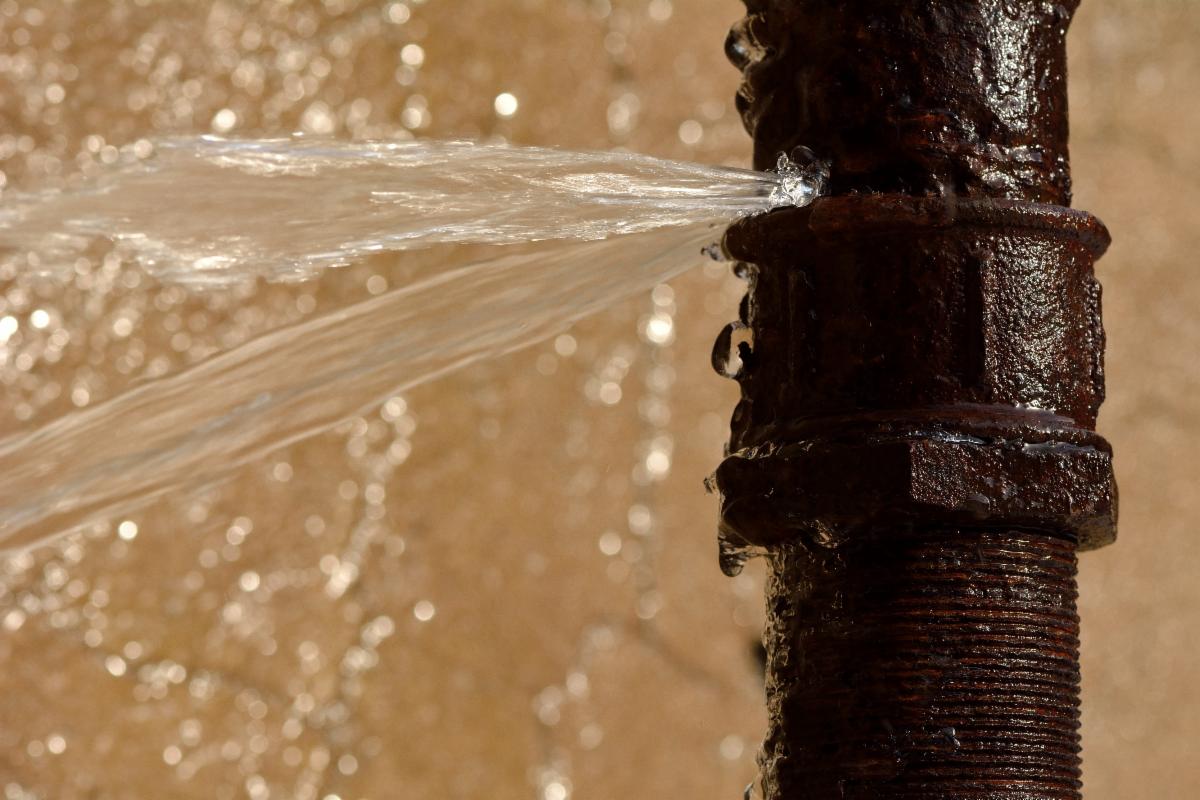
Water Water Everywhere
Two of the biggest homeowner's insurance claims are roof damage and plumbing leaks. Water damage cannot be ignored and needs to be remedied quickly, as further damage and mold are sure to follow. Here's some information on things to watch out for:
Where's That Water Coming From?
Sooner or later, you're bound to experience a water leak somewhere in your home. The usual culprits are shower pans, hot water heaters, washing machines and clogged plumbing - any of which can cause water damage.
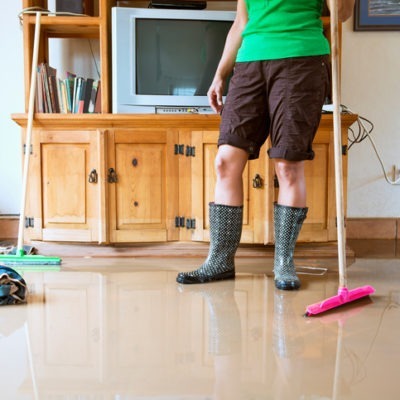 When you see water, first find the source of the leak, and shut off the water to it. Every drain and water-using appliance has a shut-off valve, so you need to know where and how to access it. In the worst case, you'll have to go outside to your main water supply and shut off the water to the whole house.
When you see water, first find the source of the leak, and shut off the water to it. Every drain and water-using appliance has a shut-off valve, so you need to know where and how to access it. In the worst case, you'll have to go outside to your main water supply and shut off the water to the whole house.
Minimize water damage by removing as much water as possible by mopping and blotting the saturated area. Use a shop-vac or rent one, and use it to extract as much water as possible.
Remove at-risk valuables and furniture with fabric or wood from the room, if possible. Wipe down cabinets and other furniture that have gotten wet. Place aluminum foil between furniture legs and wet carpet. Gather as many electric fans as possible to direct airflow toward damp spots. Open doors and windows to let in fresh air.

Call your homeowner's insurance and tell them the problem, what the damage may be, such as soaked carpet or wet hardwood floors, and what you've done to minimize it. They may refer you to a restoration company that specializes in remediating water damage. According to the Environmental Protection Agency, mold growth can occur within 48 hours of saturation, so act quickly.
Be Sure To Look Up
 One of our vendor partners Mallory Bernard, Project Manager with 1st National Roofing, tells us that our roof is designed to put up with everything nature can dish out. Year after year, it shrugs off the elements, from heat waves to hailstorms. Most home owners don't even think about their roof unless disaster strikes it, such as a tree or other large object falling, but if you own an older home with a 3 tab style shingle, changes are there is damage that you don't even notice. Luckily, roofing damage due to storms is typically covered through your homeowner's insurance policy and chances are you can replace your roof easily at a low cost to you.
One of our vendor partners Mallory Bernard, Project Manager with 1st National Roofing, tells us that our roof is designed to put up with everything nature can dish out. Year after year, it shrugs off the elements, from heat waves to hailstorms. Most home owners don't even think about their roof unless disaster strikes it, such as a tree or other large object falling, but if you own an older home with a 3 tab style shingle, changes are there is damage that you don't even notice. Luckily, roofing damage due to storms is typically covered through your homeowner's insurance policy and chances are you can replace your roof easily at a low cost to you.
Here in Georgia, large hail is rare. But there is another culprit that can cause significant damage to your roof: wind. Although your roof is designed to cope with all sorts of weather, windstorms can be surprisingly destructive. Most roofs can handle winds up to 60 mph. Did you know, according to the National Severe Storm Laboratory, severe thunderstorms can generate winds exceeding 100 mph, about twice the 50-60 mph threshold for damaging winds. In fact, thunderstorms, not hurricanes or fires, account for half of all severe damage in the lower 48 states.
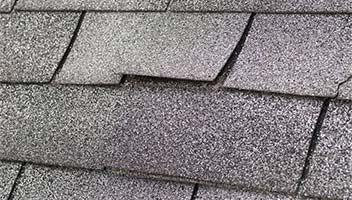
Most homeowners do not realize there's any damage to their roof if they don't see any missing shingles, but that is far from the truth. While the shingles may look intact from the ground, high winds coming up over a roof can create a suction effect and lift the shingles upwards, loosening the nails which are holding them down. When the shingles lift, the sealant between each layer can be broken, which can lead to leaks. Lifted shingles will also develop a crease at the top that looks like a crack. Eventually, this crease becomes a crack and the shingle will blow off.
 If you suspect that you have damage to your roof, the first step is getting it inspected by a roofing company. An inspection is normally at no cost to you and will take about an hour depending on the size of your roof. Each slope is inspected, and each damaged shingle is marked and documented. Any collateral damage such as gutters, siding, etc., are also documented. After the inspection, the damage will be assessed, and you will be advised to file a claim through your insurance if there is enough damage present. The claim filing process is quick, easy, and simple; and filing a claim does NOT raise your premium. After the claim is filed, your roofing inspector will handle the rest for you, from meeting with your adjuster to making sure the insurance estimate includes all items up to code. The only thing you will have to worry about is writing the check for your deductible and picking your shingle color! For more information email Mallory or call her at 334-332-2157
If you suspect that you have damage to your roof, the first step is getting it inspected by a roofing company. An inspection is normally at no cost to you and will take about an hour depending on the size of your roof. Each slope is inspected, and each damaged shingle is marked and documented. Any collateral damage such as gutters, siding, etc., are also documented. After the inspection, the damage will be assessed, and you will be advised to file a claim through your insurance if there is enough damage present. The claim filing process is quick, easy, and simple; and filing a claim does NOT raise your premium. After the claim is filed, your roofing inspector will handle the rest for you, from meeting with your adjuster to making sure the insurance estimate includes all items up to code. The only thing you will have to worry about is writing the check for your deductible and picking your shingle color! For more information email Mallory or call her at 334-332-2157
Hot Water Heaters Don't Last Forever
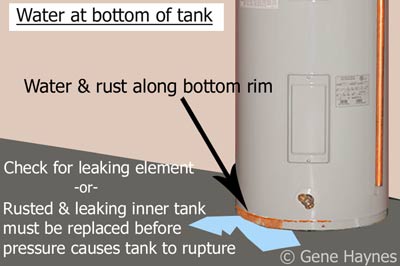 Replacing your water heater can be a headache if you don't see it coming. When you don't expect it, you're hit with an extra, unplanned expense and it can do some damage to your home.
Replacing your water heater can be a headache if you don't see it coming. When you don't expect it, you're hit with an extra, unplanned expense and it can do some damage to your home.
Our vendor partner Grassroots Plumbing tells us that the best way to minimize the pain is to keep an eye out for a few warning signs that can help you anticipate an upcoming replacement.
Knowing the age of your water heater is a good starting point, but it's not the only thing you need to know. The average water heater life span is 12-14 years. Some water heaters last longer, so your best bet is to keep the age in mind while looking out for the following warning signs.
Here are 3 signs that a water heater upgrade is on the horizon:
1. Your water heater is leaking. A leak from your water heater means it's time for a new one, and you don't want to wait too long. The leak could start small and grow into the equivalent of turning on a hose. The problem is you don't know how quickly it will fail. Occasionally, if the leak is coming from an individual component, such as the temperature and pressure relief valve, that piece can be replaced before updating the whole system. This is where the age of the water heater comes into play. If the heater is more than 10 years old and things are starting to break, you're probably better off replacing the whole thing. If it's less than 10 years old, you can consider replacing individual components first.
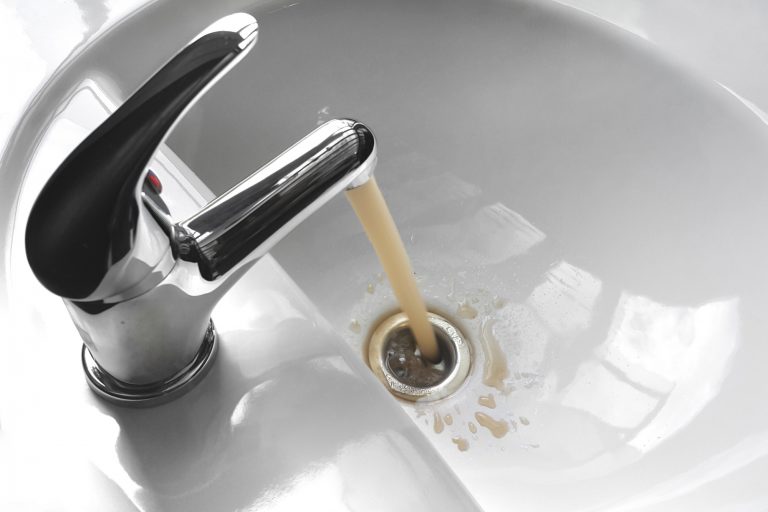
2. You have rusty water. Rusty or brown water coming from your faucets can signal that your water heater is on the way out. That's because the rust you see is the actual heater tank, rusting down and slowly exiting each time you turn on the faucet. When the tank starts to rust down, there are usually no visible changes to the outside of the heater. As a result, this issue can go unnoticed and the rusty water is a clear sign that could indicate your water heater is breaking down.
3. You can't get your white clothes clean. Even before you notice rusty water, you might be able to see another warning sign. If your water heater is starting to fail and breaking down into your water, you might notice this when you wash your clothes. If your white clothes are not getting as clean as they used to, this could be from your water heater tank failing. If you notice this, just keep an eye out for the other warning signs.
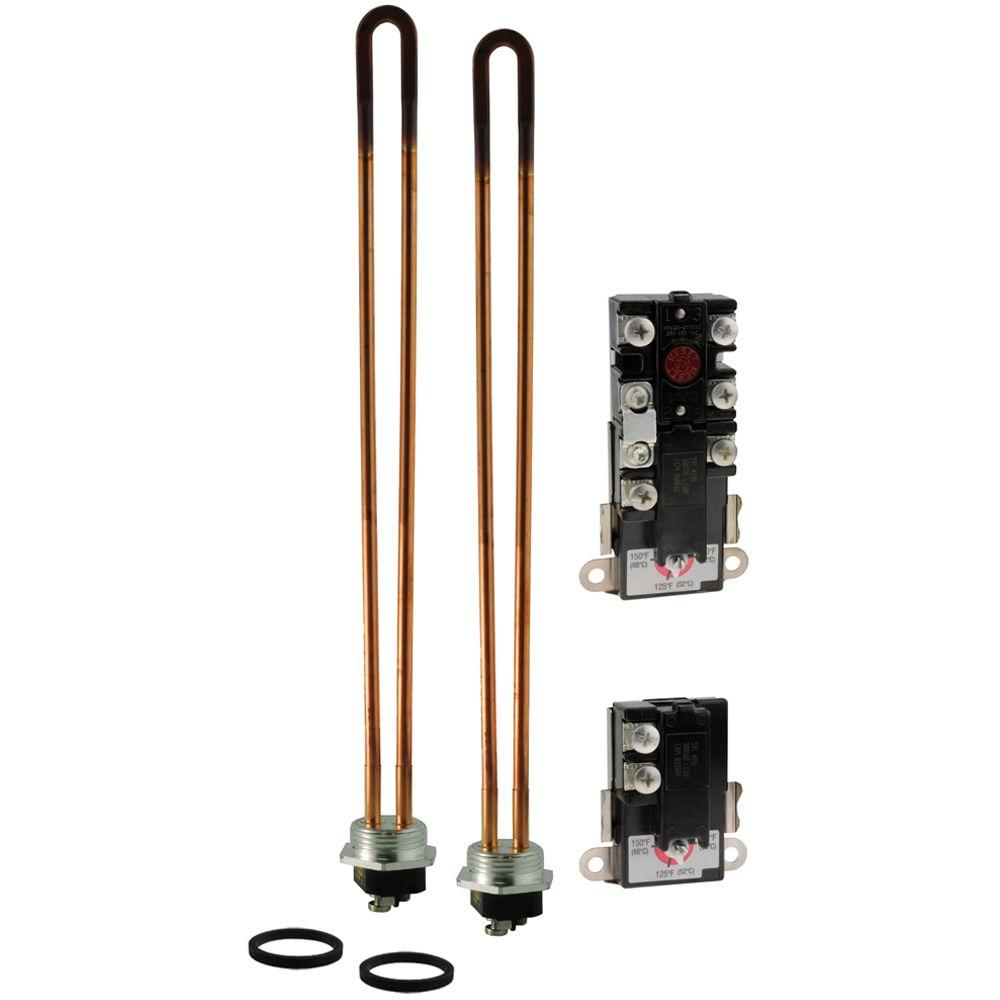
If you have an electric water heater:
These warning signs can apply to both gas and electric water heaters, but electric water heaters have a few more pieces that can be replaced before the whole thing needs to be updated. The thermostat, for example, can be replaced apart from the heater. The same is true for the heating element. Keep these items in mind if your electric heater starts to break down since replacing the individual component could save you from unnecessarily replacing everything.
Design Tip
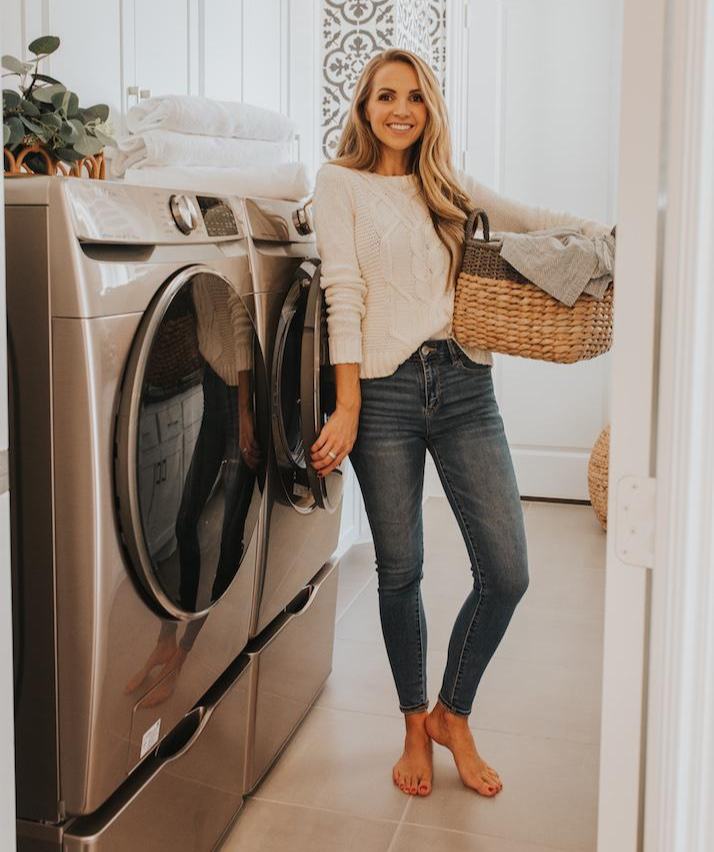
We hope you don't have a water damage caused by your washing machine, but if you do, maybe a redesign of the laundry room is worth considering. Some basics: Washers and dryers measure from 24 to 33 inches wide. For loading and unloading, allow 36 inches in front of a washer and 42 inches for a dryer. That way, you'll have room to walk around them without bumping into them.
Measurements differ for front-loading models. Stacked units occupy less than 33 square inches of floor space and are accessible to people who have difficulty bending or stooping. Front-loaders are more accessible to wheelchair users. Install a dryer about 15 inches off the floor to make loading and unloading more comfortable.
If room allows, consider adding a sink, a hanging rod, a flat space for folding, storage space for detergents etc., and an ironing board.
How Much Does It Cost?
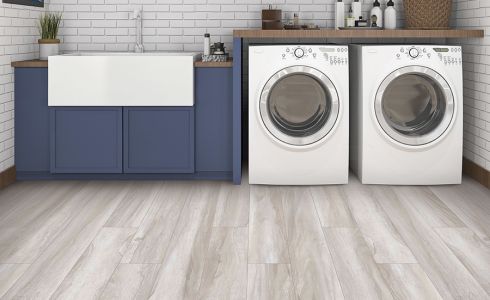
Speaking of laundry rooms, most clients install vinyl in their laundry room, with ceramic tile being the second most popular choice. Your laundry room floor should be waterproof, and tough enough to not be torn by a washer that is out of balance and moving around. It is not economical to install flooring in just your laundry room, as laundry rooms are almost always very small spaces. If your laundry room is part of a larger project, meaning there we already have a crew at your home installing flooring, a new floor for your laundry room should range between $400 to $800, depending upon the material chosen and the installation details.
I Was FLOORED By Enhance

Natosha in Austell writes:
"Our experience was BEYOND amazing with Enhance!! First, we had tried to go the big box store route to save some money since we were replacing all of the flooring in our home but found that their "low" prices didn't include great service. So I found Enhance online and visited the showroom. From my very first encounter to the measurements and installation, the service was AMAZING!! Not at one time during the process did we feel that we were getting less than the best. Our home looks brand new right now and we absolutely love our tile and carpet. We constantly recommend to other homeowners and love spreading the good news when someone compliments our home!"
Thank you, Natosha. We appreciate the referrals - be sure your friends know to tell us that you recommended us, so that you can get Decorating Dollars when they make their purchase. We hope to see you soon in the store!

New Hours
Enhance Floors and More is seeing clients in the Design Center by appointment to limit the number of people in the store at one time. We are scheduling appointments Monday thru Saturday, with our first appointment at 10 and our last appointment at 4:00.
NOTE: We are not open on Sundays.
We have plenty of disposable masks and hand sanitizer available for your use. Give us a call at to set up your time to come in.
